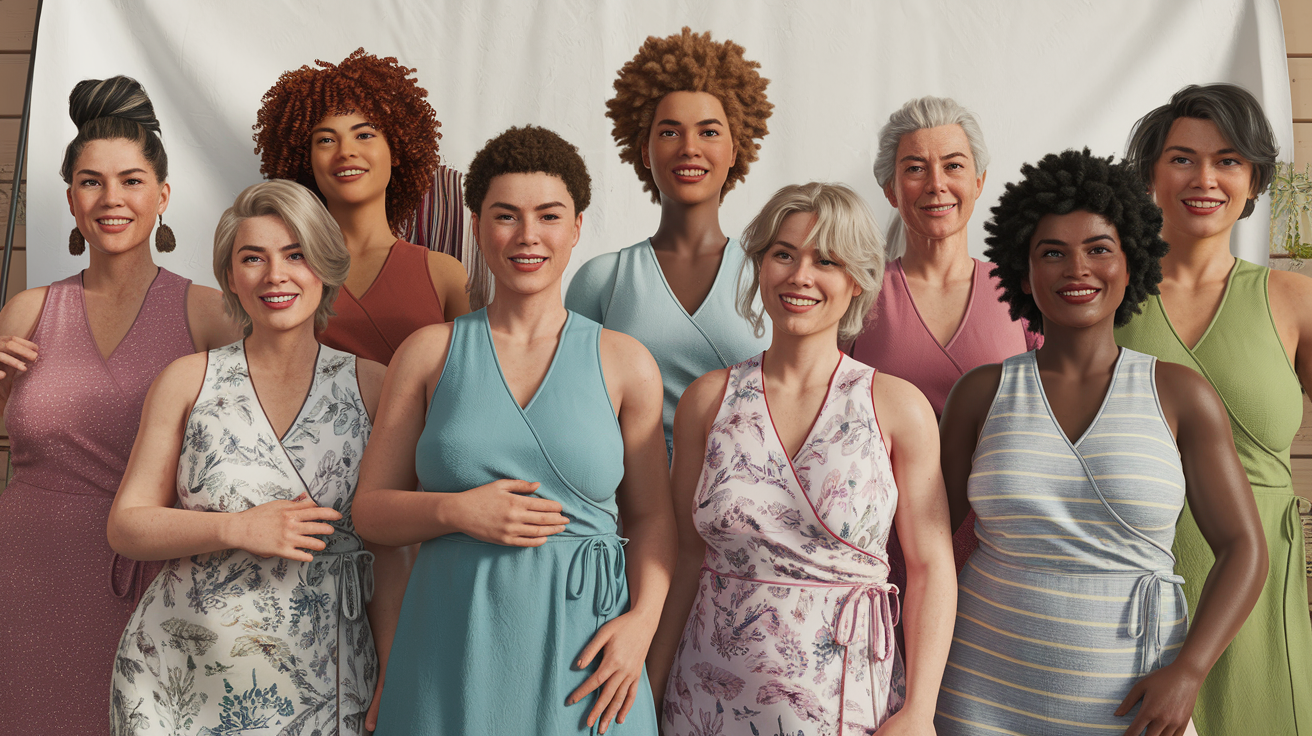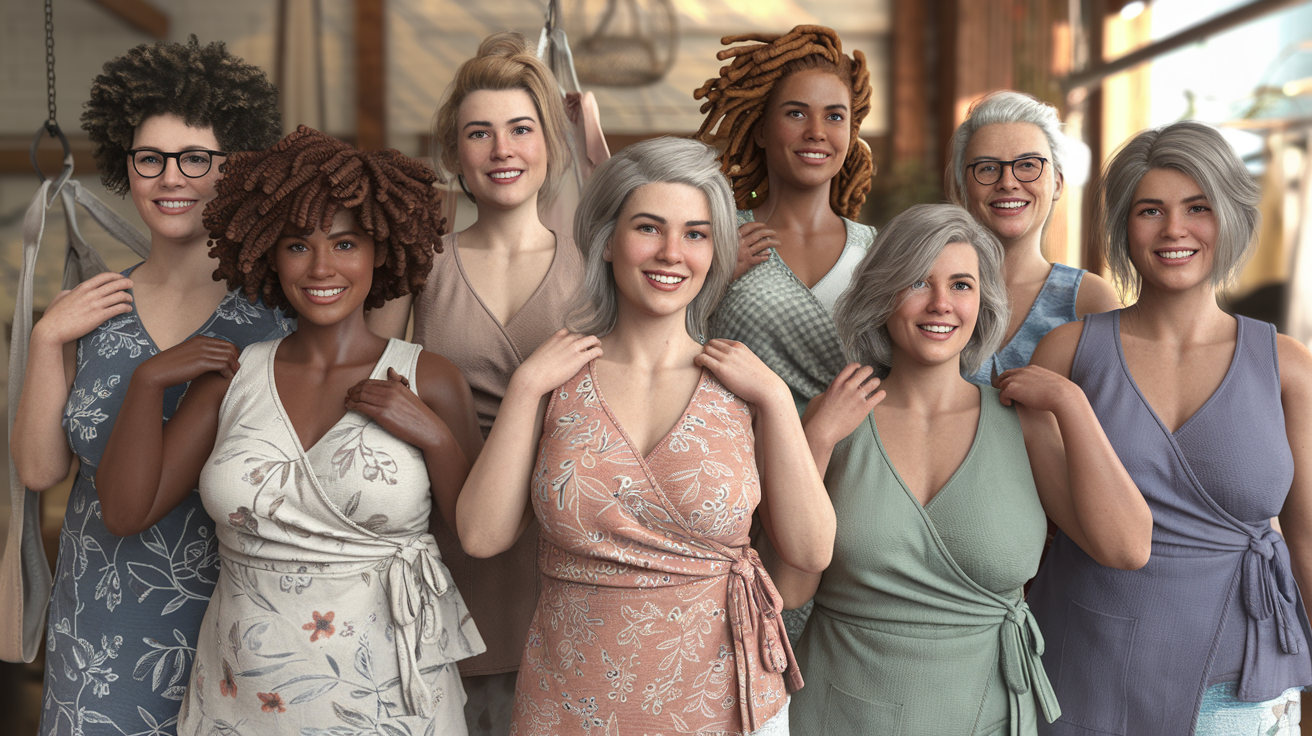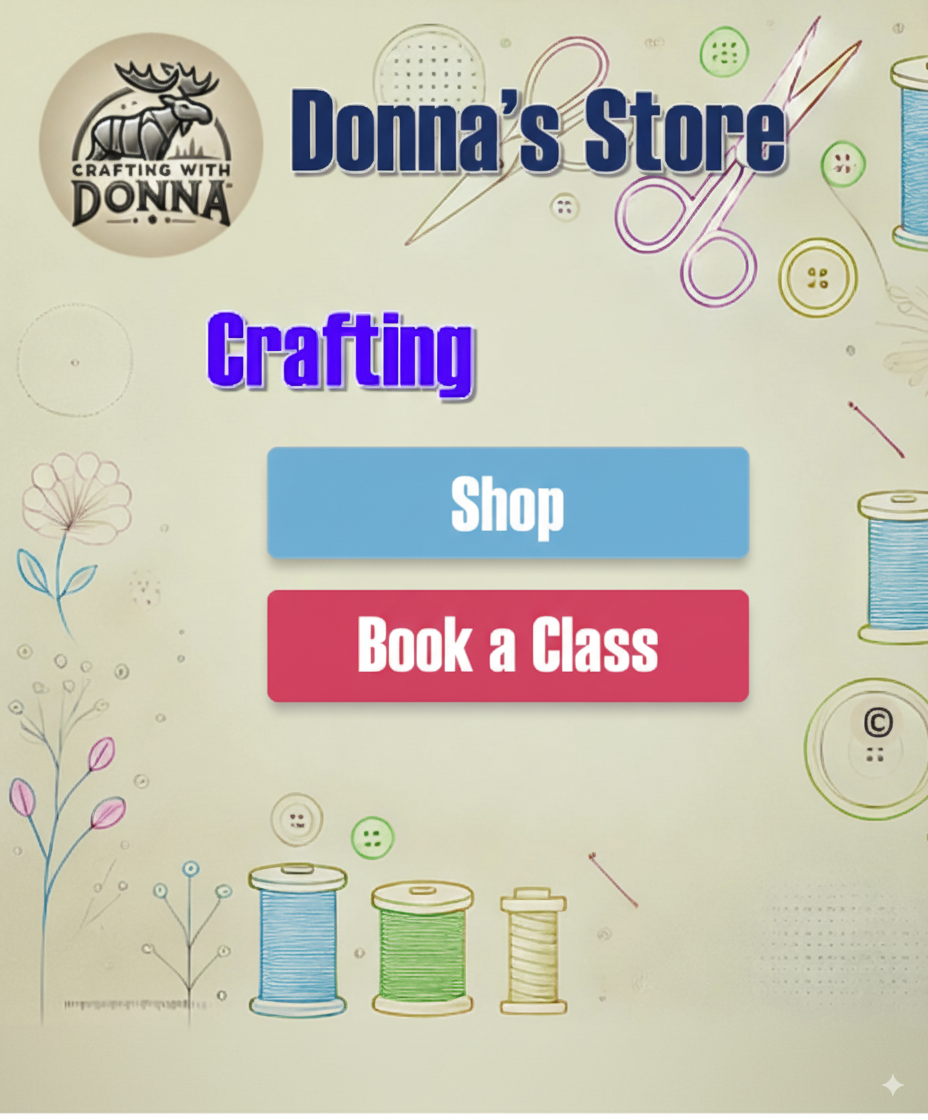Diy Wrap Dress Sewing Patterns For Women Of All Sizes

Wrap dress patterns offer a unique blend of style and wearability, celebrated for their inclusive sizing and adaptable designs that cater to a truly personal fit. Crafting your own DIY fashion allows exploration with elements like flutter sleeves, delicate ruffle hems, or chic midi lengths, ensuring that each figure finds a perfectly tailored option.
Modern sewing tutorials now provide accessible PDF patterns coupled with step-by-step instructions, supporting both novice sewers and seasoned dressmakers alike.
Features such as adjustable ties or comfortable elastic waistbands allow for that sought-after custom fit, while fabric suggestions ranging from crisp cotton weaves to soft jersey stretch elevate both comfort and appearance.
Dive into our engaging selection of garment patterns, leading you smoothly into discovering your ideal linen dress or knit wrap dress in the following section.
Finding the Perfect Wrap Dress Patterns
Choosing the right wrap dress patterns sets the foundation for successful garment creation, presenting a spectrum of options from classic real wraps to convenient faux wrap bodices, encompassing both vintage silhouettes and contemporary modern designs, with lengths extending from knee-skirts to flowing maxi styles. Consider your chosen fabric manipulation; select woven fabrics for a structured appearance or embrace the ease of jersey stretch for enhanced flexibility and movement.
Utilize comprehensive garment patterns that offer robust sewing guides featuring clear, detailed instructions, which significantly boosts the likelihood of successful clothing construction. For achieving that impeccable custom fit and universally flattering silhouettes, creating a muslin mock-up remains an essential step in the pattern drafting process, providing an opportunity to refine size inclusivity before commencement of final fabric cutting.
This approach ensures your wrap dress becomes a truly adaptable fit and a beloved wardrobe staple.
Exploring Pattern Types and Features
Pattern types are plentiful, offering everything from simple designs perfect for beginner sewing projects up to intricate styles with advanced finishing touches.
Many downloadable patterns now include variations such as handkerchief hems or dramatic ruffle hems, alongside charming flutter sleeves, versatile dolman sleeves, and diverse skirt lengths—from midi and maxi to above-the-knee styles.
These patterns are designed for both ease of wear and creative expression, making them ideal for various occasions, from everyday wear to special occasions.
Sewing tutorials often focus on specific garment making techniques, allowing for creative exploration in apparel design and fashion crafting. Instructions are provided for incorporating custom fit details, including adjustable waist ties or comfortable elastic waistbands, alongside elegant touches like notched collars or practical hidden pockets.
For those preferring extra coverage or a different aesthetic, tutorials frequently demonstrate methods for sewing fully lined dresses or creating the illusion of a wrap with faux wrap styles.
Fabric Choices for Your Wrap Dress
Fabric manipulation plays a key role in the final look and feel of your creation. Guides cover a wide range of both woven fabrics and knit fabrics, offering advice on selecting materials like breathable linen, durable cotton weaves, the elegant drape of rayon, or the comfortable stretch of jersey.
Each fabric choice contributes uniquely to the overall comfort and style of the finished piece, allowing for a truly personalized garment.
Fabric weight significantly influences the drape and structure of your dress.
For a crisp, tailored finish, opt for woven fabrics, while knit fabrics offer superior comfort, stretch, and ease of movement.
This adaptability ensures your linen dress or knit wrap dress will perfectly suit the intended occasion and personal preference, facilitating effortless garment making.
Ensuring a Custom Fit
Achieving a perfect custom fit is central to these garment patterns. Many PDF patterns come with inclusive sizing, frequently extending to plus sizes and offering multi-cup options, promoting body positivity and greater size inclusivity.
Detailed sewing guides encourage examining these patterns thoroughly, maximizing the success of your clothing construction efforts.
Creating a muslin mock-up is a highly recommended step for ensuring a precise custom fit and developing flattering silhouettes. This practice offers a valuable opportunity to perfect fit adjustments before you commit to cutting your final fabric.
This meticulous approach transforms your wrap dress into a polished wardrobe staple, reflecting meticulous garment creation and a commitment to personalized fashion.
Accessing Patterns and Tutorials
Discovering wrap dress patterns is a rewarding part of the DIY fashion journey.
Many designers and blogs provide free printables or affordable downloadable PDFs for immediate use, fostering a vibrant sewing community.
These resources make garment making accessible to everyone, regardless of budget.
Modern sewing tutorials often include comprehensive, step-by-step instructions, sometimes accompanied by helpful visual aids or even complete video walkthroughs, catering to different learning styles. These comprehensive guides simplify complex techniques, making even advanced apparel design achievable for home sewers.
This focus on clear instruction supports successful clothing construction for all skill levels.

Exploring DIY Fashion Style Guides
DIY fashion empowers you to explore personal style and build a wardrobe that uniquely reflects your individuality. Style guides often suggest creating mood boards, utilizing platforms like Pinterest or Canva to visualize your aesthetic, and collecting inspiration from leading blogs and indie designers.
As you delve into trends, focus on adapting them to suit your existing wardrobe by experimenting with garment patterns and accessories that define your personal flair.
Consider a capsule wardrobe approach; this practical starter method involves identifying wardrobe staples that can be styled for both casual outfits and work attire, laying a foundation for sustainable, personalized fashion.
DIY sewing guides, particularly those focusing on clothing construction for comfortable wear, emphasize confidence and versatility, helping beginners unlock their signature look while fostering a sense of accomplishment.
Finding Inspiration and Creating Mood Boards
Fashion crafting comes to life through visual inspiration. Explore style guides that encourage the use of platforms like Pinterest or Canva to help you articulate your personal style.
This process allows you to gather images, color palettes, and outfit combinations, serving as a visual roadmap for your apparel design ventures. Look for inspiration from indie designers and fashion blogs to discover unique ideas for your next craft projects.
Adapting Trends to Your Wardrobe
Learning to adapt trends is key to a sustainable wardrobe.
Experiment with fit adjustments and accessories to integrate current styles with pieces you already own.
This approach to garment making ensures your style evolves thoughtfully, rather than requiring constant wardrobe overhauls.
The Capsule Wardrobe Approach
A capsule wardrobe is a practical starter for DIY fashion.
Identify versatile pieces that can transition from casual outfits to work attire. This mindful approach to clothing construction builds a collection of versatile clothing that is both cohesive and functional, focusing on timeless fashion.
How to Choose Inclusive Sizing
Inclusive sizing is fundamental for successful home sewing, ensuring your creations celebrate body positivity with a truly custom fit.
Accurate body measurements—bust, waist, hips, and beyond—form the bedrock for selecting the correct garment patterns and achieving genuine size inclusivity. Research brands and indie designers recognized for their commitment to extended size ranges or adaptive clothing, and seek out sewing tutorials offering PDF patterns in plus and petite sizes.
When working with wrap dress patterns or other apparel design projects, fit adjustments like dart manipulation or elastic waistbands allow you to personalize garments for every body.
Reading customer reviews offers insights into how a particular style runs, whether it provides hidden pockets, or features adaptable fit elements, ensuring each project is a confident stride toward comfortable, versatile clothing.
Understanding Size Charts and Measurements
Inclusive sizing starts with a solid understanding of size charts and accurate body measurements.
Take the time to measure yourself carefully for bust, waist, and hips, as these are the foundational measurements for selecting garment patterns. This attention to detail ensures a better outcome for your garment creation.
Researching Brands for Inclusive Sizing
When selecting sewing patterns, it is beneficial to research brands known for their commitment to size inclusivity.
Look for indie designers or companies that explicitly offer a wide range of sizes, including plus and petite options, for their downloadable patterns. This research supports your goal of creating custom apparel.
Making Fit Adjustments for a Perfect Fit
Fit adjustments are key to achieving custom fit.
Whether you are working with wrap dress patterns or other garment patterns, understanding how to alter patterns can make a significant difference.
Tips for fit adjustments often include learning about techniques like grading between sizes or incorporating design features such as adjustable ties or elastic waistbands.
These methods enhance the adaptability of your sewing guides.
Leveraging Customer Reviews for Sizing Insights
Before committing to a pattern, check customer reviews. These reviews often provide invaluable feedback on how a particular style runs, offering insights into its true fit and any potential fit adjustments needed.
This intel can help ensure your dressmaking project results in comfortable, flattering silhouettes.
DIY Fashion and Inclusive Sizing
- Utilizing platforms like Pinterest or Canva is a suggested method for visualizing personal aesthetics and gathering inspiration for DIY fashion projects.
- A capsule wardrobe approach, focusing on versatile wardrobe staples, is a practical starter method for DIY fashion that supports both casual and work attire.
- Accurate body measurements (bust, waist, hips) are fundamental for selecting the correct garment patterns and achieving a custom fit in home sewing.
- Researching brands and indie designers known for their commitment to extended size ranges or adaptive clothing is beneficial for achieving size inclusivity in sewing projects.
Sewing Tutorials for Custom Fit
Transforming DIY fashion with sewing tutorials focused on custom fit makes any garment creation more rewarding. Learning grading seams, a technique involving trimming seam allowances to different widths, reduces bulk and allows curved sections like the bust and hips to drape flawlessly.
Fabric manipulation techniques, such as easing fabric, essential for smooth sleeve caps and curved seams, are key for achieving a perfect fit in your garment making.
Wrap dress patterns readily incorporate these methods for excellent results.
Grading Seams for a Flawless Finish
When undertaking garment making, applying grading seams ensures a cleaner garment finish and lasting comfort, especially along princess seams and armholes in your dressmaking projects.
This technique is essential for a polished look in your tailored clothing.
Easing Fabric for Smooth Curves
Carefully gathering and stitching fabric makes easing fabric an essential tip for accommodating curves at the bust and hip, contributing to the overall comfort and appearance of your custom apparel.
This fabric manipulation is key for flattering silhouettes.
Mastering Pattern Alterations for Personalized Fashion
Minor changes at the bust, waist, or hip line significantly enhance fit; slice pattern pieces and add or remove length or width for true personalized fashion and adaptable fit.
These fit adjustments are fundamental for creating custom apparel.
Adjusting Shoulder Seams for Comfort and Appearance
Tailored clothing is only as comfortable as its shoulders.
Adjusting this seam, whether for slope or width, ensures both appearance and wearability, particularly in wrap dress patterns, contributing to great clothing construction. Adjustable ties and elastic waistbands also aid in creating a custom fit.
Embracing Inclusive Sizing for All Sewists
Choose PDF patterns with clear alteration guides to make your wrap dress tutorial accessible for all bodies, aligning with a commitment to body positivity and adaptable fit. This approach supports size inclusivity and celebrates body positivity in apparel design.
Discovering downloadable patterns from indie designers can offer great visual aids.
By mastering these sewing guides, from pattern adjustments to finishing touches, your next garment creation will embody both style and a custom fit, providing confidence with every wear.
Explore a variety of garment patterns, including those for a linen dress or incorporating a ruffle hem, to expand your crafting projects. These step-by-step instructions are invaluable for any craft project.
What is a Knit Wrap Dress?
A knit wrap dress offers a remarkable blend of elegance, practicality, and all-day comfort, making it a staple in both casual outfits and event dresses. The defining feature of this style is its adjustable, wrap-around design—secured with ties for an adaptable fit—partnered with stretch fabrics such as jersey or rayon blends for a fluid, flattering silhouette.
Knit fabrics uniquely contour to the body’s shape, making them ideal for personalized fashion and fit adjustments across various sizes.
These qualities make them perfect for everyday wear and special occasions.
Adjustable ties at the waist provide easy customization, while the fabric’s stretch allows the garment to hug curves without restricting movement, offering a truly adaptable fit.
Comfort and Versatility in Knit Fabrics
The inherent softness and flexibility of knits make these dresses suitable for work attire, everyday wear, and even special occasions with the right styling.
They are wardrobe staples that offer comfort wear options. The drape of rayon and the stretch of jersey are exemplary for this.
Most knit wrap dresses are machine washable and naturally wrinkle-resistant, offering a practical advantage for busy lifestyles and travel, enhancing their wearability.
Supporting Size Inclusivity and Body Positivity
With adaptable fit and stretch, these garments support size inclusivity and flatter a wide range of body shapes, ensuring body positivity in modern apparel design.
This attention to detail makes them a favorite for many in the sewing community, and they are excellent for beginner sewing projects. Many designers offer downloadable patterns for diverse needs.
Whether you’re a sewing community newcomer or an experienced dressmaker, starting with beginner sewing patterns for knit wrap dresses promises both fashion crafting satisfaction and everyday comfort. Consider styles with flutter sleeves or midi lengths for versatile designs.
These garment patterns are excellent additions to any wardrobe.
Key Techniques for Custom Fit Garments
- Grading seams, which involves trimming seam allowances to different widths, reduces bulk and allows curved sections like the bust and hips to drape flawlessly.
- Easing fabric is essential for accommodating curves at the bust and hip, contributing to the overall comfort and appearance of custom apparel.
- Adjusting shoulder seams for slope or width ensures both appearance and wearability, contributing to great clothing construction.
- PDF patterns with clear alteration guides support size inclusivity and adaptable fit, making garment creation accessible for all bodies.
Mastering Garment Creation Techniques
Elevate your apparel design skills by mastering advanced techniques that transform basic clothing construction into sophisticated fashion crafting. Garment creation thrives on a deep understanding of fabric grain; precise fabric cutting with the correct grain ensures a lovely linen dress hangs smoothly and achieves a flawless custom fit.
For intricate DIY fashion projects, advanced finishing touches truly elevate the design—try French seams for elegant, durable seams, particularly with lightweight woven fabrics, or apply bias binding to curves for professional-looking necklines and armholes.
Exploring these comprehensive sewing tutorials, you’ll discover that advanced stitching methods such as topstitching, edge-stitching, and utilizing PDF patterns help deliver polished, enduring results.
Practicing these techniques not only enhances each handmade piece, but also builds confidence for tackling more complex garment patterns and embracing the full potential of modern dressmaking.
Exploring Advanced Finishing and Fit Adjustments
Building upon foundational sewing skills allows sewists to create more complex garments with ease and flair.
Achieve a professional look through advanced finishing techniques. Many wrap dress patterns feature options for enhancing the garment’s appeal and wearability.
For a stylish knit wrap dress, consider a delicate ruffle hem or a playful flutter sleeve for added movement and charm.
The importance of fabric grain cannot be overstated; its correct alignment significantly impacts how a finished garment, like a flowing maxi length dress, drapes.
Practice techniques like French seams for durable and neat edges on finer fabrics, or bias binding for beautifully finished curved edges, a hallmark of quality garment making. Adapting fit through precise fit adjustments ensures that each piece feels wonderful on.
Inclusive Sizing and Fabric Choices for Custom Apparel
Creating custom apparel becomes an accessible and rewarding craft when focusing on inclusive sizing and thoughtful fabric selection. Discover the beauty of sewing with diverse fabrics, from the crisp hand of cotton weaves to the fluid drape of rayon, each offering unique qualities for your projects.
Jersey stretch in a knit wrap dress provides exceptional comfort and ease of movement, making it perfect for everyday wear.
Patterns often include size inclusivity, celebrating body positivity through a wide range of measurements, allowing for truly personalized fashion.
Many sewing guides and craft projects offer step-by-step instructions, sometimes accompanied by video walkthroughs, to demystify techniques like sewing fully lined dresses or creating faux wrap styles. These details empower you to create flattering silhouettes that become cherished wardrobe staples.
Versatile Styles and Modern Design Elements
From creating simple casual outfits to elegant event dresses, the versatility of garment creation is immense. Explore different sleeve styles, such as dolman sleeves, or experiment with hemline variations like handkerchief hems.
The classic wrap dress, a timeless fashion piece, lends itself to endless customization.
This includes adding details like notched collars, hidden pockets, or adjustable ties for both style and function.
Many indie designers offer downloadable patterns and style guides that cater to various aesthetics, from bohemian styles to vintage silhouettes and modern designs. For those new to sewing, beginner sewing tutorials and free printables provide an excellent entry point into the world of apparel design.
The adaptability of these patterns ensures that you can tailor your creations for various occasions, from work attire to relaxed weekend wear.
| Key Garment Creation Techniques | Benefits and Applications | Featured Garment Examples |
|---|---|---|
| Fabric Grain Alignment | Ensures smooth drape and flawless fit. | Linen dress, flowing maxi length dress |
| Advanced Finishing (French Seams, Bias Binding) | Creates elegant, durable, and professional-looking edges. | Necklines, armholes, lightweight woven fabrics |
| Stitching Methods (Topstitching, Edge-stitching) | Delivers polished, enduring results and enhances design. | PDF patterns, garment patterns |
| Fit Adjustments | Ensures comfort and a wonderful feel on the body. | Wrap dress patterns, knit wrap dress |




